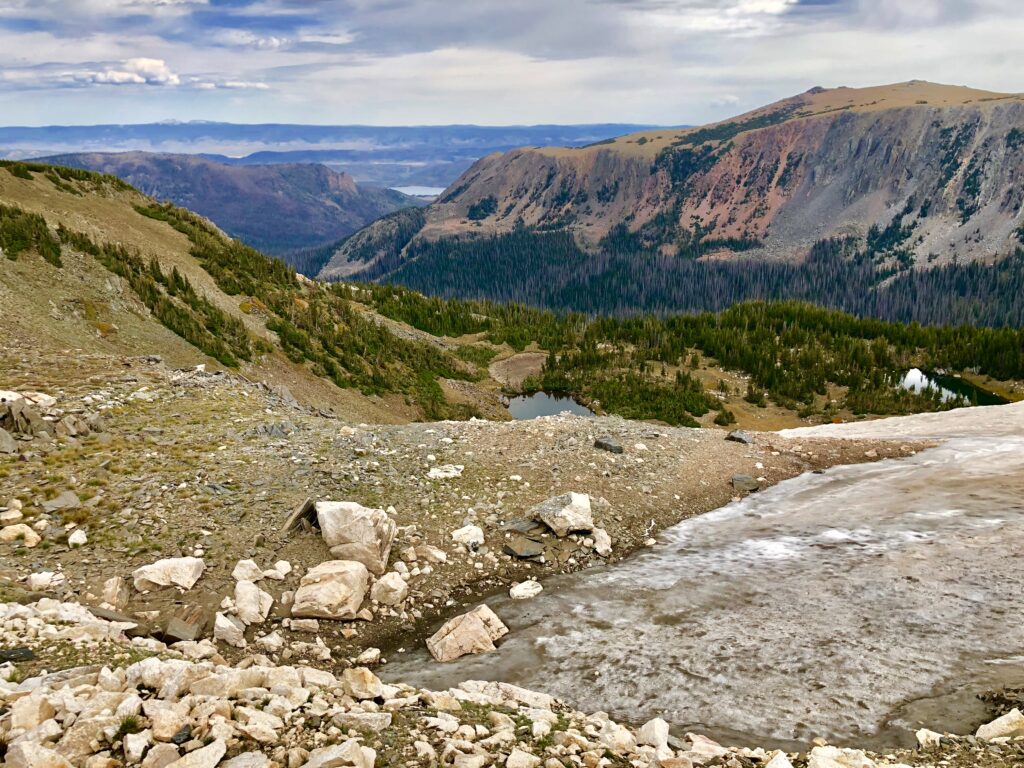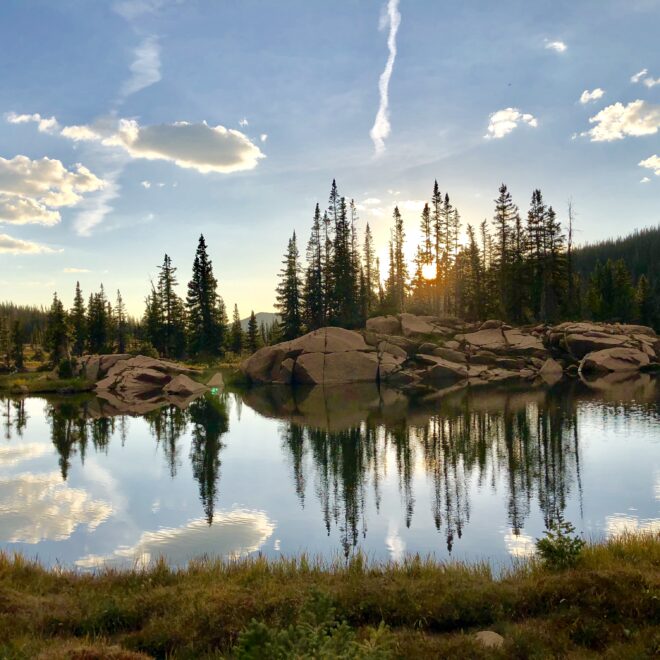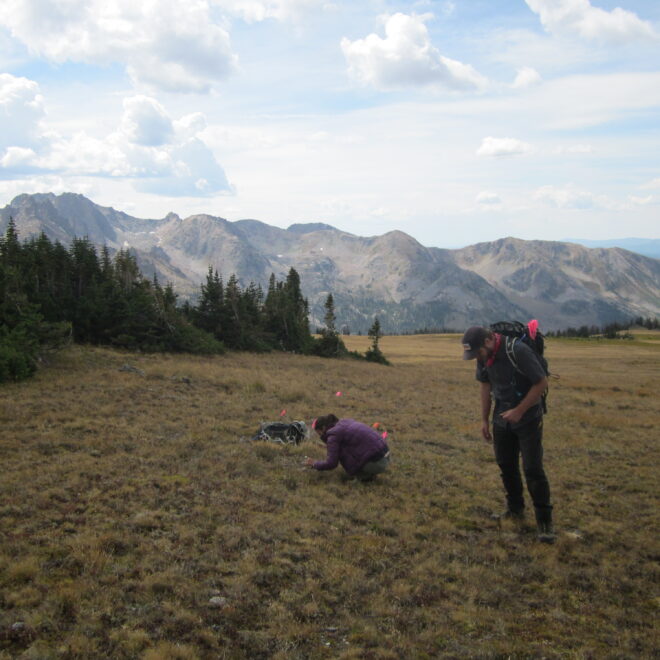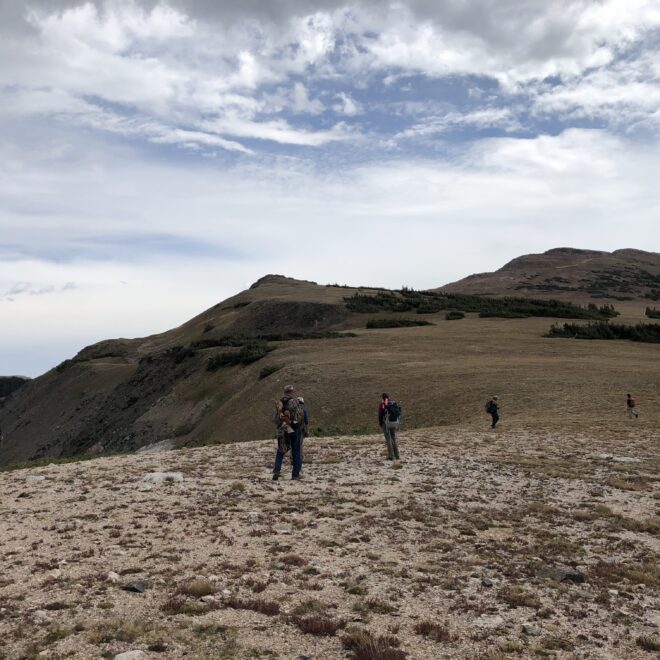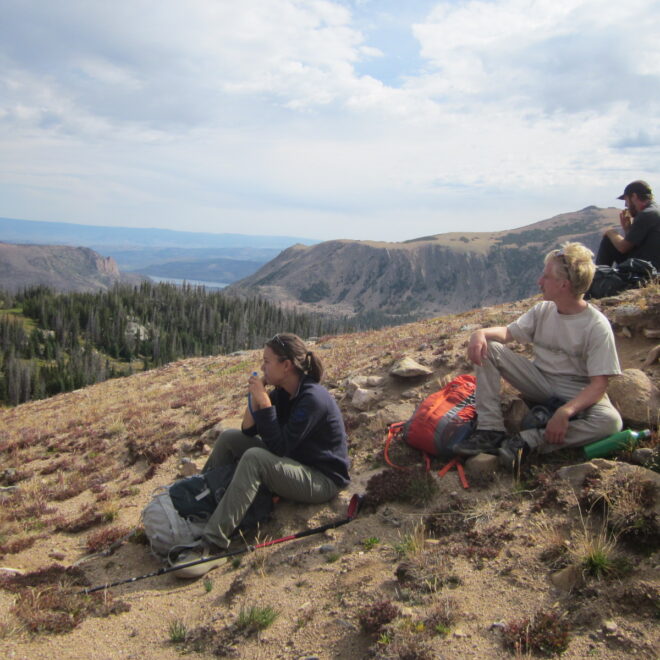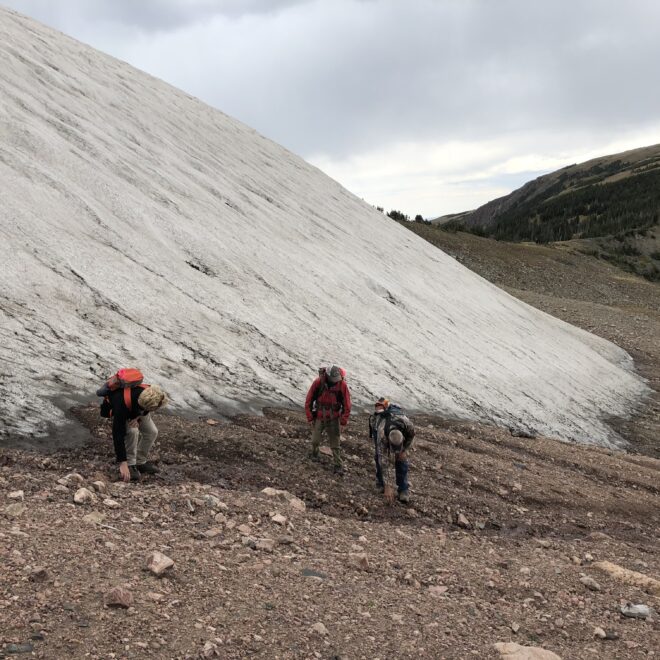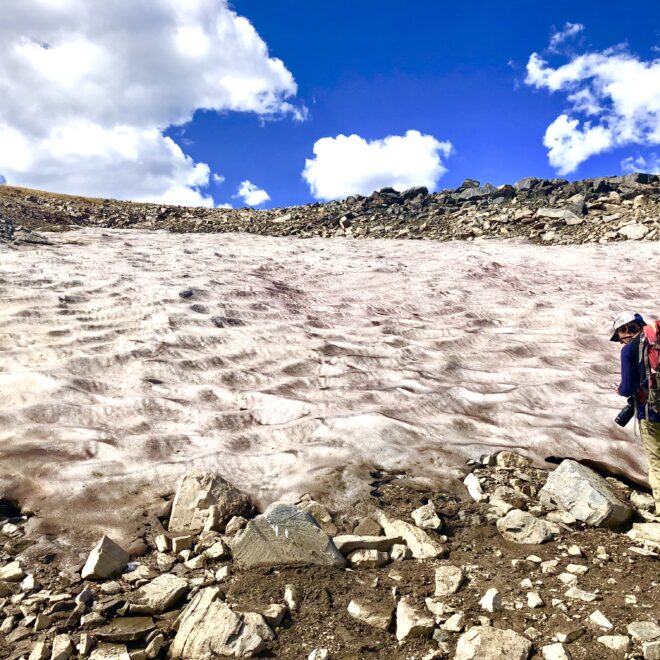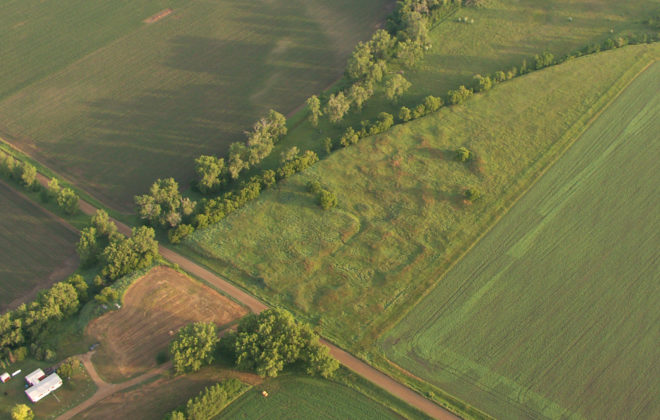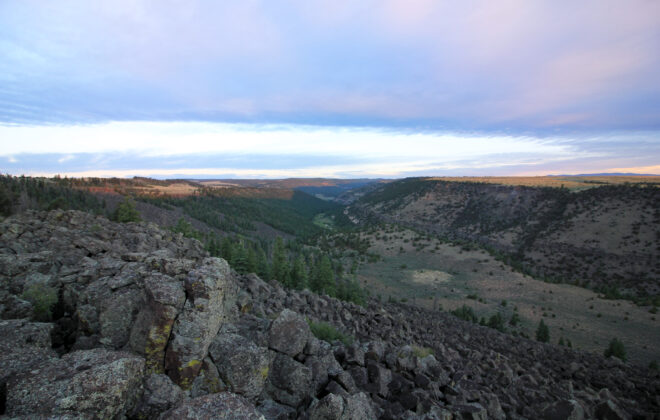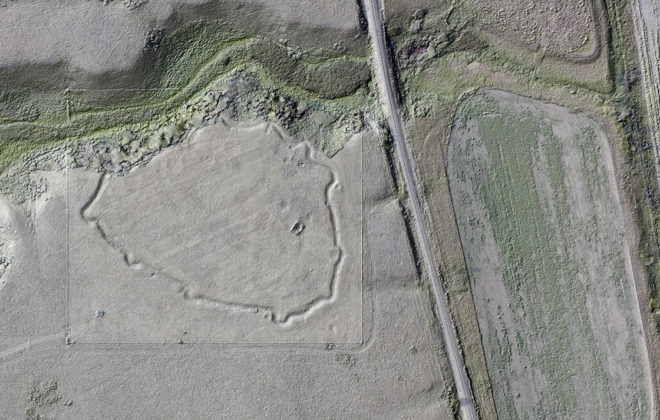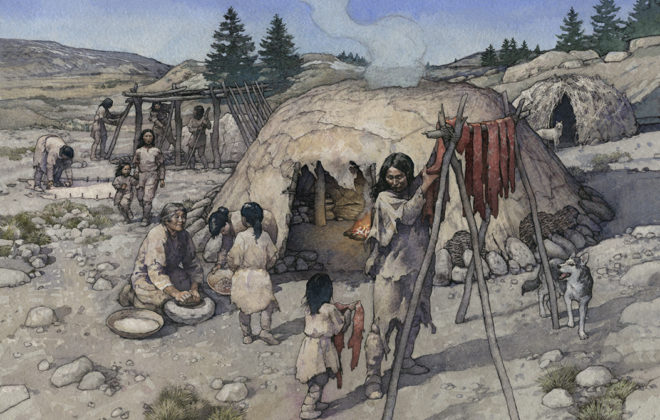Archaeology of the Mount Zirkel Wilderness
The Mount Zirkel Wilderness Area encompasses approximately 65,000 hectares of montane woodland, subalpine forest, and alpine tundra situated within the Medicine Bow-Routt National Forest at the northern end of the Park Range in north-central Colorado. The Park Range, in turn, forms the western boundary of North Park, a large intermountain basin that has been occupied by American Indian groups in the region for at least 10,000 years since the late Pleistocene or early Holocene.
In the summer of 2018, a small PCRG research team spent four days surveying in the Mount Zirkel Wilderness, recording nine new cultural resources, and investigating three semi-permanent ice patches for cultural material. Eight of the resources are related to American Indian occupation of the high country; all are relatively small–in terms of both spatial extent and the number of artifacts. None of the ice patches produced cultural remains, but floral or faunal samples were collected from the fore-fields of all three for further study. Dating and additional laboratory analysis indicate that all the material is of local origin and dates to within the last 450 years.
Comparative data from the Rabbit Ears, Never Summer, and Medicine Bow mountains suggest that American Indian utilization of alpine ecosystems in the Mount Zirkel Wilderness was probably intermittent and ephemeral. This activity may have involved small groups of people who entered the alpine zone for short periods of time to hunt, forage, or simply travel back and forth across the northern end of the Park Range. The situation may have been similar for the Rabbit Ears and Never Summer mountains, as well, given the low number and diversity of resources in both ranges. By contrast, the Medicine Bows contain a much higher frequency and diversity of American Indian resources, indicating that these mountains were visited more often, and by larger groups who undertook a wider range of activities and stayed for longer periods.

